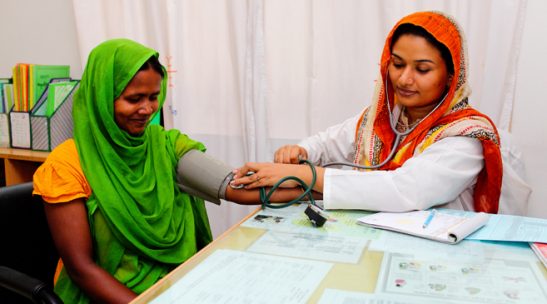
17 Oct National Health Workforce Accounts: Better Data for Better Decisions
This post originally appeared on Chemonics’ blog Connections.
As the human resources director at the Ministry of Health, you know your country has health workforce challenges. You know that certain regions in the country suffer from maldistribution of health workers with challenges for retention in rural, hard to reach areas. Your reports show that health workers are stationed in rural posts but there are concerns with absenteeism. You have heard complaints that there aren’t enough female providers in those areas that could also be impacting accessibility of services. Your ability to hire more workers is limited and you need to ensure that future candidates are equipped with competencies need to meet population needs for family planning, maternal health, and HIV/AIDS.
You quickly realize that you and your colleagues at the Ministry of Health, Ministry of Education, and the Ministry of Finance need to collaborate. You need a way to gather and pool data to answer important workforce-related policy questions. Are providers accessible? Do those providers have skills that match the local population’s health needs? Is the country producing enough new workers to replace those leaving the system? How can we incentivize health workers to stay? How will we pay for increased investments in education and worker incentives? The list goes on.
Welcome National Health Workforce Accounts (NHWA)
The World Health Organization’s (WHO) recently adopted Global Strategy on Human Resources for Health addresses these complexities by calling for, as a first step, the optimization of the existing health workforce. USAID’s HRH2030 program reflects this need for optimization in its first strategic objective. For example the program is helping HIV/AIDS implementing partners to improve the productivity and performance of providers at the facilities they support. The strategy also cites the need for “investments in strengthening country-level [human resources for health] HRH data systems and to achieve standardization and interoperability of HRH data across countries.” The United Nations High-Level Commission on Health Employment and Economic Growth also cites the NHWA as an enabling condition to reach HRH goals. To support these efforts, WHO developed the National Health Workforce Accounts (NHWA) as a modular approach for routine collection of health workforce data.
The NHWA will support compilation of HRH data by pulling from available data systems and sources, such as Human Resource Information Systems (HRIS), payroll databases, Ministry of Education records, Civil Service personnel files, and many others. NHWA uses these systems to answer questions under three groupings:
- Education. The NHWA starts by describing education and production of providers: how many are graduating? How many graduates make it into the labor market? How is health education paid for?
- Labor force. A second group of modules describes the labor market: how are HRH financed and regulated, and what are the annual entries into and exits out of the health labor market?
- Serving population health needs. The final grouping of indicators answers the basic questions of the number, location, and skill mix of current providers.
A country’s NHWA “will define core indicators and data characteristics—in a modular format—that can be progressively measured to monitor workforce trends, enable improvements in workforce/health systems planning and holistically support the comparability of the health workforce landscape nationally and globally,” according to the WHO Draft NHWA Manual for Consultation.
Why NHWA?
NHWAs represent a standard data set so global policymakers, like WHO, can make comparisons between national HRH situations and make good decisions for HRH investments. The NHWA data set can also support better alignment for HRH across stakeholders and inform decision-making to strengthen systems for HRH. A strong health workforce will accelerate progress toward global health goals. Strong HRH data will provide critical information for countries in addressing specific challenges impacting service delivery and health outcomes, such as the one described in the beginning of this post.
Often the best solution isn’t the most obvious. It’s hiding in the data. By embracing the National Health Workforce Accounts, we can bring solutions to the surface and position countries to better serve their people’s health needs.
This week USAID and WHO are cohosting a two-day workshop in Maputo, Mozambique, in collaboration with HRH2030 to introduce the NHWA to government officials from 10 African countries. As part of the workshop, participants will determine the state of HRH data and systems in their countries and create a road map of steps to reach NHWA self-sufficiency.
Marc Luoma is a director and human resources for health advisor in Chemonics’ Global Health Division.





